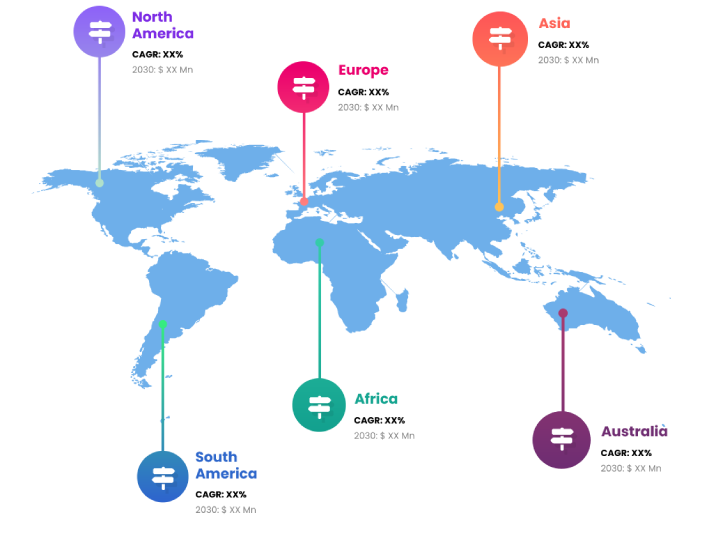
A number of factors are driving the expansion of the multimedia chipsets market, including the increasing number of internet-connected devices, the popularity of over-the-top (OTT) platforms, audiovisual systems, and video games as a form of entertainment, and the high demand for multimedia chipsets in televisions, computers, wearable devices, and other embedded computing systems. The research study offers a comprehensive analysis of the global multimedia chipsets market. A thorough examination of the market's important segments, trends, drivers, constraints, competitive landscape, and factors influencing the market is provided in the study.
Microchips, which are integrated electronic devices, are the main focus of the multimedia chipsets market, which has great promise for the downsizing of big software and systems. The rising need for multimedia chipsets, driven by rising living standards and development in emerging nations, is driving investments in the semiconductor and electronics industry.
Factors such as the widespread usage of wearable electronics and the development of better internet infrastructure worldwide are likely to propel the multimedia chipset market to new heights throughout the projected time. The multimedia chipset market is expected to have further growth due to rising disposable income and technological advancements in developing nations. However, market expansion throughout the projection period could be stymied by high static costs associated with manufacturing unit development. However, there is a lot of room for growth in the gaming industry's multimedia chipset market, and vendors stand to gain in the years to come.
An all-in-one solution for consumers offering over-the-top (OTT), cable TV, and home networking services through a single cable, advancements in technology, rising incomes, and an increase in the demand for smartphones with advanced features are the key factors propelling the expansion of the global multimedia chipset market. Expensive devices with a lot of features and a high battery consumption rate are the ones limiting this industry. Bluetooth modules, as well as multimedia processors.
The memory's integrated multi-chip module format has poor processing capabilities, a smaller screen, and poorer stability. Possibilities include the new Alexa voice service developer toolkit, which is expected to enhance smart speaker and smart home application functionality. The rise of voice-controlled gadgets and hands-free portable speakers are two examples of the smart services that are driving demand for multimedia chipsets.
The growing interest in health and fitness among millennials is fueling the wearable technology market, which in turn is driving the multimedia chipsets market CAGR. The desire to purchase consumer electronics for the purpose of online movie and TV show streaming is also a key factor in the demand for smartphones and other portable mobile devices. Data traffic on mobile devices and broadband has increased dramatically. Faster internet connections are highly sought after due to the meteoric rise in mobile data usage. In terms of market share, graphics chipsets have always been more lucrative than multimedia chipsets overall. The number of people who watch videos online has grown substantially over the past several years, thanks to improvements in internet infrastructure around the world. In light of the aforementioned concerns, the demand for multimedia chipsets is anticipated to increase in the next years.
The need for reliable hardware in a variety of wearable and mobile devices is also on the rise due to the widespread availability of high-speed internet. There is a growing demand for chipsets that can manage advanced features, such as the ability to play and record 4K video, utilize 3D graphics, and more, due to the increasing popularity of mobile devices. Multimedia chipsets are seeing rising demand due to the increasing number of Internet-enabled devices such as smartphones, tablets, smart TVs, and more. Strong chipsets are necessary for the growing number of mobile devices that play digital media. Better multimedia chipset layouts are a result of advancements in semiconductor technology. Efforts to reduce costs, boost performance, and reduce power usage have all been successful. Multimedia chipsets are becoming more common, which is driving the global market expansion.
A comprehensive analysis of the market, including quantitative and qualitative data, is included in the research. It summarizes and predicts the worldwide multimedia chipset market by segmentation. Also included are the five main regions' market sizes and forecasts for 2020–2028: North America, Europe, Asia–Pacific (APAC), MEA, and South and Central America. Subsegmentation of the multimedia chipset market is done according to nations and segments within each region. The research delves into the present trend and potential prospects in the region, as well as an analysis and prediction of 18 countries worldwide.
Report Coverage
Global Multimedia Chipset research report categorizes the market for global based on various segments and regions, forecasts revenue growth, and analyzes trends in each submarket. Global Multimedia Chipset report analyses the key growth drivers, opportunities, and challenges influencing the global market. Recent market developments and Multimedia Chipset competitive strategies such as expansion, product launch and development, partnership, merger, and acquisition have been included to draw the competitive landscape in the market. The report strategically identifies and profiles the key Multimedia Chipset market players and analyses their core competencies in each global market sub-segments.
| REPORT ATTRIBUTES | DETAILS |
|---|---|
| Study Period | 2017-2031 |
| Base Year | 2023 |
| Forecast Period | 2023-2031 |
| Historical Period | 2017-2021 |
| Unit | Value (USD Billion) |
| Key Companies Profiled | NVIDIA Corporation (U.S.), Intel Corporation (U.S.), Realtek Semiconductor Corp (Taiwan), Qualcomm Inc. (U.S.), Cirrus Logic Inc. (U.S.), Advanced Micro Devices Inc. (U.S.), DSP Group, Inc. (U.S.), Apple Inc. (U.S.), Broadcom Corporation (U.S.), Marvell Technology Group, Limited (U.S.), Samsung Group (South Korea), Actions Semiconductor Co., Ltd. (China), MediaTek Inc. (Taiwan), NXP Semiconductors, N.V. (Netherlands), STMicroelectronics (Switzerland) |
| Segments Covered | • By Product |
| Customization Scope | Free report customization (equivalent to up to 3 analyst working days) with purchase. Addition or alteration to country, regional & segment scope |
Key Points Covered in the Report
- Market Revenue of Multimedia Chipset Market from 2021 to 2031.
- Market Forecast for Multimedia Chipset Market from 2021 to 2031.
- Regional Market Share and Revenue from 2021 to 2031.
- Country Market share within region from 2021 to 2031.
- Key Type and Application Revenue and forecast.
- Company Market Share Analysis, Multimedia Chipset competitive scenario, ranking, and detailed company
profiles. - Market driver, restraints, and detailed COVID-19 impact on Multimedia Chipset
Market
Competitive Environment:
The research provides an accurate study of the major organisations and companies operating in the global Multimedia Chipset market, along with a comparative evaluation based on their product portfolios, corporate summaries, geographic reach, business plans, Multimedia Chipset market shares in specific segments, and SWOT analyses. A detailed analysis of the firms' recent news and developments, such as product development, inventions, joint ventures, partnerships, mergers and acquisitions, strategic alliances, and other activities, is also included in the study. This makes it possible to assess the level of market competition as a whole.
List of Major Market Participants
NVIDIA Corporation (U.S.), Intel Corporation (U.S.), Realtek Semiconductor Corp (Taiwan), Qualcomm Inc. (U.S.), Cirrus Logic Inc. (U.S.), Advanced Micro Devices Inc. (U.S.), DSP Group, Inc. (U.S.), Apple Inc. (U.S.), Broadcom Corporation (U.S.), Marvell Technology Group, Limited (U.S.), Samsung Group (South Korea), Actions Semiconductor Co., Ltd. (China), MediaTek Inc. (Taiwan), NXP Semiconductors, N.V. (Netherlands), STMicroelectronics (Switzerland)
Primary Target Market
- Market Players of Multimedia Chipset
- Investors
- End-users
- Government Authorities
- Consulting And Research Firm
- Venture capitalists
- Third-party knowledge providers
- Value-Added Resellers (VARs)
Market Segment:
This study forecasts global, regional, and country revenue from 2019 to 2031. INFINITIVE DATA EXPERT has segmented the global Multimedia Chipset market based on the below-mentioned segments:
Global Multimedia Chipset Market, By Type
Auto chipsets
Graphic chipsets
Global Multimedia Chipset market, By Application
Digital cable TV
Set-top box
IPTV
Home media player
Handheld devices
Others
Global Multimedia Chipset Market, By End User
Customers electronics
IT & Telecommunications
Media & Entertainment
Government
Others
Global Multimedia Chipset market, Regional Analysis
- Europe: Germany, Uk, France, Italy, Spain, Russia, Rest of Europe
- The Asia Pacific: China,Japan,India,South Korea,Australia,Rest of Asia Pacific
- South America: Brazil, Argentina, Rest of South America
- Middle East & Africa: UAE, Saudi Arabia, Qatar, South Africa, Rest of Middle East & Africa
You will get in-depth and extensive multimedia chipset market market research and competitor analysis for your business to help you develop more profound insights into the multimedia chipset market Market.
Through INFINITIVE Data Expert is a professional Market Research services, I will identify the multimedia chipset market market size, demand & opportunities, growth rate, and target audience with a comprehensive analysis of your competitors.



